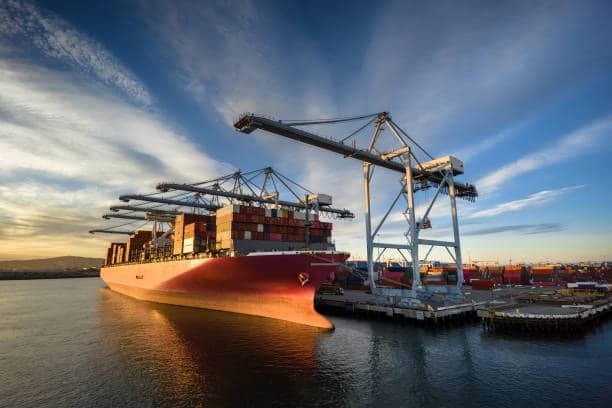Introduction
Shipping container shipping prices have become a topic of increasing concern for businesses, logistics companies, and individuals who rely on global trade, as the costs of transporting goods fluctuate due to numerous factors, including fuel prices, demand and supply dynamics, geopolitical events, and port congestion, and understanding the intricate details of these costs can help stakeholders make informed decisions, optimize their logistics strategies, and plan effectively for future shipping expenses. Competitive marketplace dominance requires businesses to track shipping container cost trends and cost variables alongside global trade network expansion and economic integration trend. Any business or individual who conducts operations in global trade must understand the various costs which arise from transporting shipping containers. The price of shipping changes through multiple variables which incorporate container dimensions and geographic distance as well as market supply and demand for shipping services. The document explores shipping container pricing extensively alongside methods for handling these costs effectively.
Types of Shipping Containers

Different container types affect pricing due to their specialized features:
- Standard Dry Containers: Shipped goods through general cargo with dimensions either 20-foot or 40-foot based format.
- Refrigerated Containers (Reefers): Temperature-control requirements drive the design of this shipping solution meant to preserve perishable items.
- Open Top Containers: Oversized cargo having dimensions which exceed standard door capacity can be transported using these types of containers.
- Flat Rack Containers: Suitable for heavy or bulky items, such as vehicles or machinery.
Average Container Shipping Rates

Below are estimated shipping costs based on recent trends:
- Asia to North America (West Coast):
- 40′ container: $2,800 – $3,200
- 20′ container: $2,000 – $2,400
- Asia to North America (East Coast):
- 40′ container: $3,500 – $4,000
- 20′ container: $2,500 – $3,000
- Asia to Europe:
- 40′ container: $3,000 – $3,500
- 20′ container: $2,200 – $2,700
Breakdown of Shipping Costs

Understanding cost components helps in better budgeting:
- Freight Charges: The final price for transporting this shipping vessel actually serves as the main point of expense.
- Port Handling Fees: Shippers must pay fees to ports for handling containers during unloading operations and for loading them onto vessels at ports.
- Insurance Costs: Having insurance is optional therefore recommended for protecting your investment.
- Additional Services: Shippers receive seamless service which encompasses port delivery and customs clearance in addition to warehousing services.
Tips to Reduce Shipping Costs

To manage and lower expenses, consider the following strategies:
- Consolidate Shipments: Ship your loads together to send one large container.
- Be Flexible with Shipping Dates: Off-peak seasons offer lower rates.
- Negotiate with Carriers: By entering long-term shipping agreements you can request improved pricing terms.
- Choose a Reliable Freight Forwarder: Expert professional services enable organizations to minimize costs.
The Factors Affecting Shipping Container Shipping Prices

Several factors influence the final shipping cost of shipping this:
Container Size and Type:

Steel shipping containers with unique features and larger sizes will cost you more money.
Shipping Distance and Route:

Shippers must pay higher costs and freight rate for transporting products along less frequently traveled longer shipping routes.
Market Demand & Seasonality:

The price for shipping increases when transportation occurs during the busiest shipping times.
Fuel Costs:

variable fuel costs have direct consequences on what the shipping industry charges for its services.
Port Charges & Customs Fees:

Local tariffs imposed at ports cause fees to differ between nations and their maritime governance rules.
The multiple pricing factors in shipping container shipping create total expenses for shippers necessitating thorough aspect analysis to forecast price volatility and establish cost reduction measures. Analyses of individual components enable better predictions about future pricing patterns while helping identify cost-effective measures for strategy development.
1. Fuel Prices and Their Impact on Shipping Costs

International maritime fuel expenses represent a prominent pricing factor throughout shipping container shipping because oil market price variations directly influence shipping company expenses that directly affect consumer freight rates positively and negatively when fuel costs increase or decrease respectively. Liquefied natural gas (LNG) and biofuels are alternative energy solutions that influence all container shipping costs because shipping companies adopt cleaner fuel technology to meet regulatory requirements.
2. Supply and Demand in the Shipping Industry
Shipping container shipping prices change according to seasonal demand patterns where elevated needs during peak holiday stores or global trading spikes generate increased air freight and prices however off-peak periods present decreased prices which enhances shipping affordability. E-commerce alongside international manufacturing requires more containerized shipping which has caused regional demand for these services to reach unprecedented heights.
3. Port Congestion and Delays

Port congestion acts as a major determinant of shipping container shipping prices by creating container backlogs while raising shipping company operational costs and resulting in steep price increases because sluggish ports must handle greater cargo loads and labor shortages or operational inefficiencies force longer delays and incur extra storage expenses and rerouting expenses. Studies based on the Suez Canal blockage have proven how transportation bottlenecks in single regions cause prolonged delivery timelines while driving up shipping container transport costs calculated throughout the world.
4. Container Shortages and Equipment Availability

The price of shipping containers through vessel transport becomes substantially more expensive when containers cannot meet market demand because imbalanced in container load distributions combined with pandemic-related trade disturbances have created a shortage of shipping containers which increases competition for available freight containers. Inadequate equipment supplies such as specialized cold containers for perishable products increases expenses across certain industrial sectors.
5. Geopolitical Events and Trade Regulations
Shipping container shipping prices suffer from direct impacts caused by political instability and trade wars or sanctions along with government policy changes through increased costs whenever trade restrictions are implemented or disruptions force businesses to use more expensive alternative transport methods. These factors ultimately escalate costs for customers. Recent shifts in international trade protections together with new regulatory guidelines will either make full container load pricing more stable or fuel bigger fluctuations between time periods.
6. Currency Exchange Rates and Inflation

Currency exchange movements and inflation levels shape container shipping cost and container shipping prices because international trade generates operations across multiple currencies while exchange rate fluctuations raise shipping service costs which result in higher fees for affordable container shipping to businesses. The increasing labor costs coupled with material shortage problems create added difficulties for assessing price variation.
Trends in Shipping Container Shipping Prices
The costs associated sea freight and with shipping making use of containers change based on diverse market factors which determine existing price points while enabling businesses to forecast expenditure shifts.
1. Post-Pandemic Recovery and Price Stabilization

After reaching record heights during the COVID-19 pandemic peak, shipping container shipping prices stabilized due to increased container output while ports optimized their efficiency which reduced mounting supply chain challenges leading to more reliable pricing systems. During global economic realignment after the pandemic disruptions shipping container shipping prices exhibit ongoing market fluctuations.
2. Increased Use of Digitalization and Automation

Visual and technological resources adopted by shipping industries enhance operational efficiency and optimize delivery systems so shipping costs will eventually become competitive and more affordable. Shipping companies leverage predictive analytics alongside blockchain technology to both boost transparency as well as diminish operational inefficiencies.
3. Sustainability and Green Shipping Initiatives

Stricter carbon emission regulations promoting environmentally safer transportation options force shipping companies to spend on green fuel alternatives and energy-efficient vessels and sustainable logistics methods that will ultimately offer long-term savings alongside regulatory compliance advantages. The industry now faces tightened regulations to decrease emissions while governments set challenging emissions targets for industry development.
Strategies to Manage Shipping Container Shipping Prices

Businesses along with individuals must develop specific strategies which help them handle shipping container shipping price fluctuations while optimizing their shipment management process.
1. Advanced Booking and Planning
Shipments booked early will secure better prices and prevent price spikes since early planning enables shippers to access lower rates during off-peak times and free shipping capacity. By planning shipment times effectively companies maintain better money control.
2. Negotiating with Shipping Companies

By sustaining strong relationships with shipping providers companies can secure favorable pricing agreements through electronic agreements and loyalty discounts that manage expense variations. By partnering with multiple carriers businesses gain increased negotiating authority.
3. Diversifying Shipping Routes and Carriers
Businesses that evaluate alternative shipping options together with multiple carrier partners enjoy greater flexibility and reduced expenses because different carriers calculate prices through their operational strengths and transport capabilities and port to port only. A diversified shipping plan reduces both the effects of port congestion and disruptions in the supply chain.
4. Utilizing Freight Forwarders and Logistics Experts

Freight forwarders alongside 3PL providers assist companies by applying their established knowledge to achieve optimized shipping practices and secure competitive rates as well as regulatory compliance while ensuring standard logistics operations By using advanced logistics management software businesses can optimize their shipping operations.
Conclusion
The complexity surrounding international container shipping prices demands an in-depth analysis of market phenomena and external events along with industry direction. Your business success at cost-effective global shipping operations stems from market information combined with strategic cost reduction approaches and market trend adjustment ability. Numerous elements determine shipping container prices because they encounter fluctuations because of worldwide economic conditions. Knowledge about industry trends along with collaboration with expert logistics providers allows you to secure optimal shipping rate contracts. When choosing transportation options conduct multiple price comparisons to secure the lowest shipping rates for your requirements container ships.
To get precise pricing information consult with freight forwarders or utilize online container shipping cost calculator and calculators shipping container costs. The selection of shipping container determines a substantial portion of total shipping expenses. Among multiple container options the standard dry container offers the most cost-effective solution yet specialized equipment like reefers (refrigerated containers) alongside flat racks with open tops typically require greater expense due to their specific functions and necessary supplementary equipment. You need to consider additional expense for temperature-sensitive shipment since you must provide proper storage conditions which extends across the delivery time ocean freight.
Effective cost management in shipping demands multiple strategies that combine smoothing shipping behavior. Cost management in international shipping requires companies to merge multiple shipments into each shipment container while also accepting delivery schedule changes during off-peak periods to achieve reduced prices through extended freight carrier contracts. Your shipping operations benefit from an experienced international freight and forwarder because they lead you through international customs laws while preventing additional fees from arising during transit.




